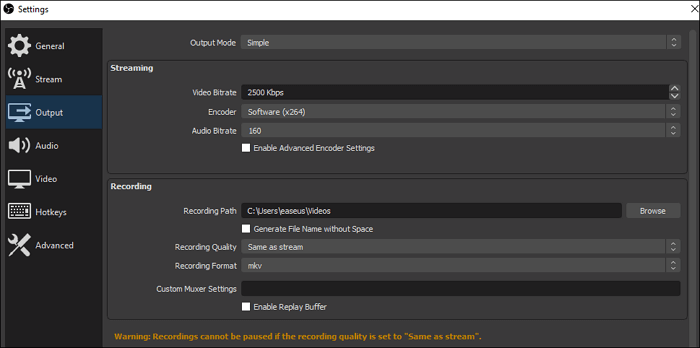

Me=umh: Uses the Uneven Multi-Hexagon (UMH) method to analyze motion, which can provide a higher level of detail and accuracy in detecting motion. Me=hex: Uses hexagonal search patterns to analyze motion, which can be more efficient than traditional square search patterns in detecting complex motion. Here are some of the different parameters for me= and why each one is good: (The me= (motion estimation) parameter in x264 controls the method used to analyze motion in the video frames during the encoding process. (DIA is mainly good for fast motion paced games, Hex and UMH provide more quality) Dia is generally considered to be the best option for image quality, as it performs a more detailed analysis of motion than other methods. The ME method determines how motion estimation is performed during the encoding process. 4 is a good number of reference frames to use for most streamers. Using more reference frames can result in better image quality, but it also requires more processing power. Reference frames are frames that are used as a reference point for other frames.

3 is a good number of B-frames to use for most streamers. Using B-frames can result in smoother video and better image quality, but it also requires more processing power. A keyframe interval of 40 strikes a good balance between image quality and bandwidth usage.ī-frames refer to bidirectional frames, which are frames that reference both past and future frames. A shorter interval can result in better image quality, but it also requires more bandwidth.

The keyframe interval determines how often a full frame is transmitted during a stream. A higher bitrate generally results in better image quality, but it also requires more bandwidth. By streaming at 1080p, you can ensure a smooth viewing experience for your viewers without sacrificing image quality.īitrate refers to the amount of data transmitted per second during a stream. While you can certainly stream at higher resolutions, doing so can put a strain on your computer and internet connection, resulting in dropped frames or lag. Streaming at 1080p is the standard for most streamers on Twitch. With x264, you have more control over the encoding process, which can result in smoother, more detailed video. While some people may opt for NVENC due to its hardware acceleration capabilities, x264 is generally considered to be the better option in terms of image quality. While there are many different settings to consider, here's a guide on why the following OBS settings are a great choice for streaming on Twitch: When it comes to streaming on Twitch, having the right OBS settings can make all the difference in terms of image quality and overall performance. Same post is also available in the guide section:


 0 kommentar(er)
0 kommentar(er)
